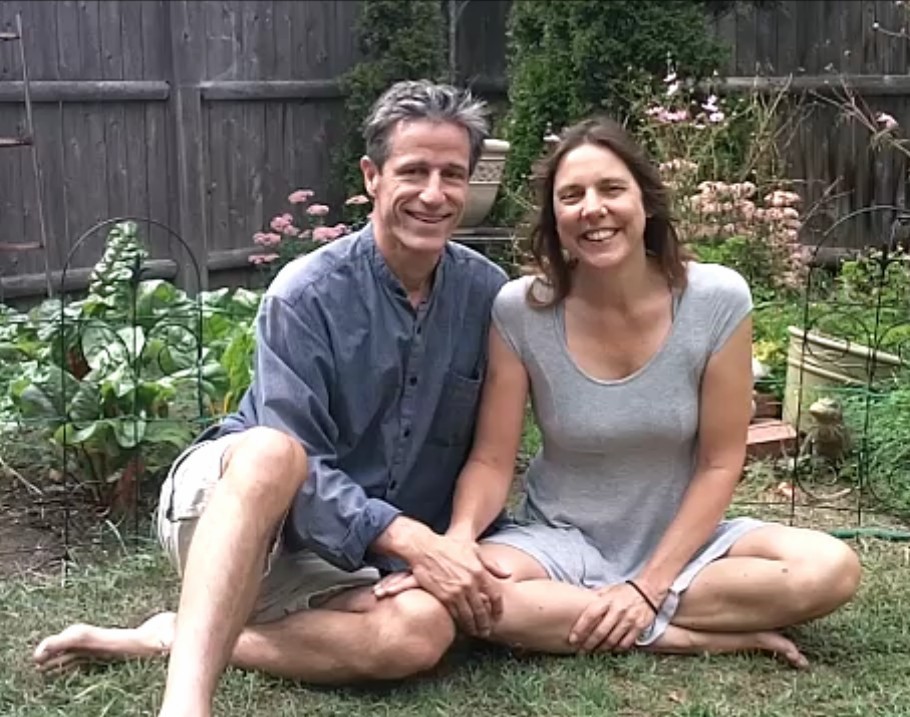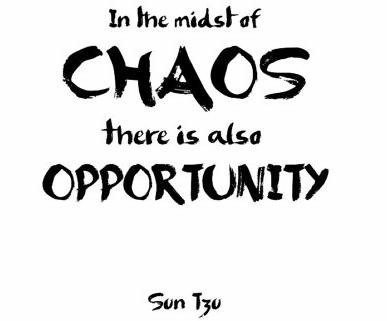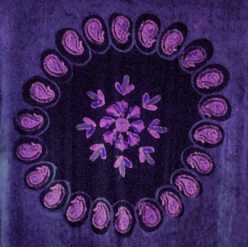Ch-Ch-Ch-Changes
“The only way to make sense out of change is to plunge into it, move with it, and join the dance.”
― Alan W. Watts

[Jim & Gloria are launching a series of "co-blogs", here, taking on a variety of subjects including Navigating Change,
Relaxing in a Busy World, Communicating
Consciously with Your Spouse or Partner ... please let us know what you think!]
Many new students come to the Yoga Center for the first time because something significant has changed in their life. It could be a job loss, divorce, illness or death, or that they’ve simply begun to notice more aches and pains in an aging body. Life naturally brings changes to us all, but this time, for some reason, the “something” feels unmanageable to them. So on our doorstep they appear, looking for some some support.
 Jim: “Some of you have heard my story before. On the advice of a frustrated physical therapist, I took my first yoga class in 1992. This was my second PT, and he too was giving up on me…passing me along to someone else. (To his credit, he had tried valiantly, for months, to relieve me of the symptoms of a very stiff and painful neck.)
Jim: “Some of you have heard my story before. On the advice of a frustrated physical therapist, I took my first yoga class in 1992. This was my second PT, and he too was giving up on me…passing me along to someone else. (To his credit, he had tried valiantly, for months, to relieve me of the symptoms of a very stiff and painful neck.)
A lawyer in a very “type A” profession, I had by this time exhausted all the usual medical avenues. Feeling somewhat desperate, I skeptically enrolled in a generic yoga class at the local YMCA. Long story, short: After only a few sessions, my neck ailments began to dissipate, and I started to have modest insights…and, eventually, one huge realization: Being a lawyer was not allowing me to do the things that brought me the most joy in life. My tightening body had been letting me know what my head was denying — I hated what I was doing, and it was time for me to make a change.)”
The truth is, life is continually changing all around us, and if we wish to be in harmony with its ongoing flow, we must learn to dance with change. Otherwise, we will feel beaten up by its force. (Think of it as choosing to float along in a river’s current — versus standing in the river, trying to hold back its powerful flow.) Typically, when a new student shows up, feeling the effects of some difficult change in their life, they aren’t experiencing simply the latest blow. In fact, at any given moment, we are all dealing with a lifetime of accumulated slings and arrows. For this particular student, at this point in time, it may be that their nervous system can no longer hold the tension, or their body can no longer brace itself. (Again, think of trying to hold back that river…eventually, the effort would thoroughly wear out any one of us!)
After years of continuous stress, the body becomes deeply fatigued, and we can feel broken down and defeated. For many, this experience can also bring on a feeling of despair.

Finding the Opportunity in Crisis
You may have heard that, within the Chinese symbol for “crisis,” lies the symbol for “opportunity”. Happily, from the yogic perspective, we can re-frame any change or setback into an opportunity for growth, or even profound awakening. Changes are, firstly, a chance to look more closely at how we’ve habitually coped with the world around us. Next, this new awareness can guide us to begin making peace with where we are… which, in turn, will lead us to choosing something new and healthier.
This healthier next choice does not come merely from our doing more, though — that’s the mistaken belief many of us carry. Instead, our life’s brighter new chapter arises from a state of beingness, and from a connection with a deep knowing or intuition.
And this knowing is innate in each one of us.
How We Connect
The term we use at the Yoga Center to describe how we connect with beingness is welcoming. For example, when anger arises within us, we feel and “welcome” the anger. When there is a tension in the body, we feel and welcome that tension. If an extremely hateful thought shows up…? Yes, we welcome that, too!
At first, the idea of welcoming all our thoughts and feelings seems totally ridiculous, doesn’t it? Students often ask, Why would I want to welcome this thing I do not want in my life? Clearly, they are viewing welcoming as a kind of unpleasant resignation — they think they’re being told to “suck it up” and “just accept” a very distasteful situation. (Just get ready to stay miserable! in other words…)
Actually, welcoming is the absolute opposite of sucking anything up; nor is it a dutiful resignation. As the Alan Watts quote above suggests, welcoming is learning to relax and dance with what is already here. That’s dance, my friends — not self-flagellate, or cover your body in rough sackcloth and ashes. Instead of imagining the process as penance, you might picture yourself dancing joyfully — fascinated and engaged, even — with a partner. The resignation many students envision would be more like inviting your partner to drag your reluctant, limp body across a dance floor (to a backdrop of really awful music!). Or letting a river crash you against the rocks and possibly drown you.
Welcoming, instead, involves being peacefully awake and alert. It means noticing — in a very relaxed and curious way — what is happening inside of us. We observe our thoughts, emotions, and bodily sensations (rather than react from them). In this simple experience of awareness, nothing more is required of us. And if we can give up the willful doing in this way, that is when we will begin to experience our intuition, receive inspired “guidance” — i.e., know the perfect response to whatever our current situation might be.
Let’s Get Practical
So okay, you get it: The answer to dealing with life’s difficult changes is to dance with them…or, as we say, “welcome our arising thoughts and feelings.” Now you may be wondering how, in practical terms, does one actually perform this welcoming. How do we be “awake and alert in a relaxed way”…and how do we do any of this without willful effort?
First, let’s accept that the practice of welcoming is a practice. We’ve all been conditioned to respond to life in a non-welcoming way — we avoid, reject, suppress, critique, refuse, etc. our thoughts and feelings — and we’ve had a long time to practice this unwelcoming behavior. So let’s start making peace with ourselves, and acknowledge that we don’t yet handle change perfectly. And that that’s okay. Important changes come about slowly, and we are a work in progress.
Next, we re-learn to breathe. How we breathe is — I say this as a yoga teacher of 22 years not prone to exaggeration — perhaps the most significant determinant of our life’s ultimate quality. Quick basics: Most of you are breathing short, shallow breaths, right now(!), and this habit is triggering your sympathetic nervous system (i.e., putting you into a flight-or-fight state). Learning to slow and gently deepen your breath will turn down this nervous response, and relax you. (It will also activate your parasympathetic nervous system which, among other things, fires up your immune system so it can do its healing magic.)
Life’s Dance
By learning to breathe and welcome, we’re really learning to dance with the changes that we are experiencing in our lives. At the Yoga Center, we’re helping students navigate their challenges with greater success, joy, effectiveness, and ease. Students feel supported by both their teacher and their fellow students (who, like them, are learning to gracefully flow with life’s everchanging currents).
Gift. Even if you are not yet a student at the Yoga Center, we still want to support you on your journey, starting with this small (though, quite possibly, life-enhancing) gift. Click here to view a short video designed to help you master a simple, deeply-relaxing breathing technique.
Go ahead…it just may change your life.
